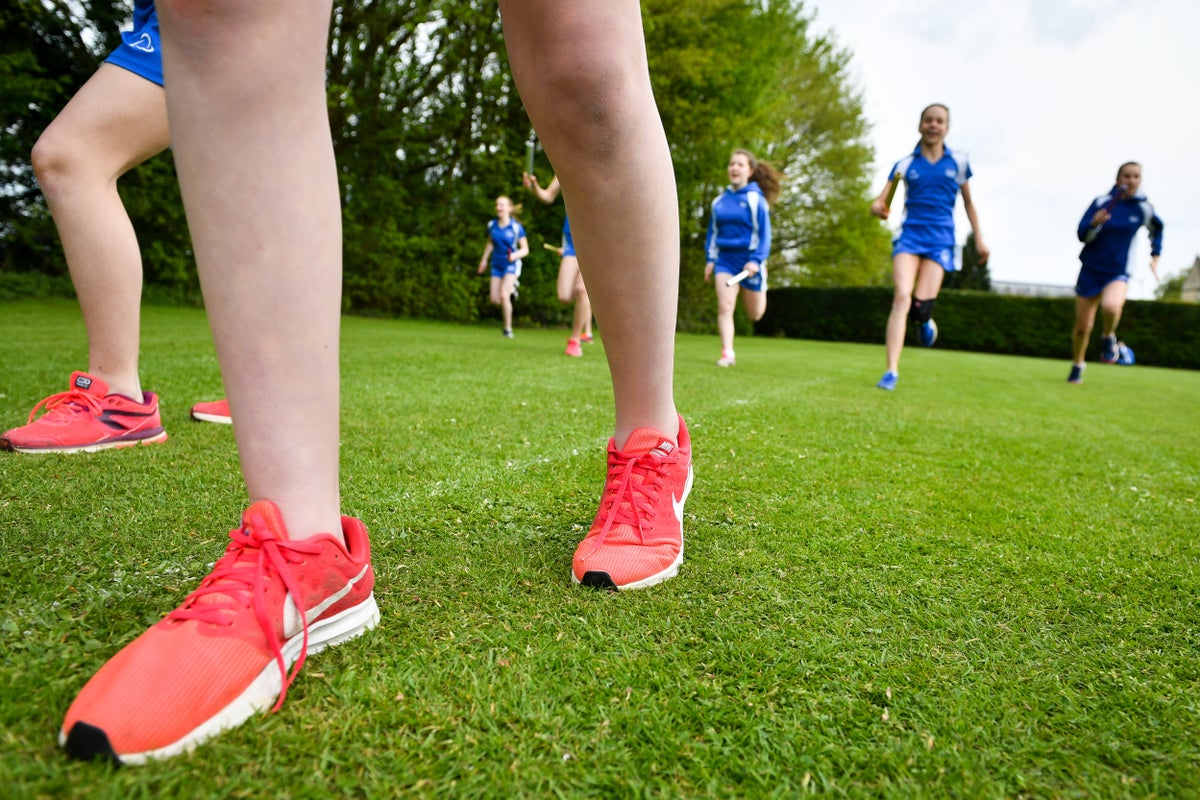
Almost half of British six-year-olds are not meeting their daily recommended exercise targets, according to a new study.
Researchers found that almost half (47%) of children that age are not doing enough physical activity.
Experts say children aged five to 18 should get at least 60 minutes of moderate to vigorous exercise a day to benefit their physical and mental health.
It is also recommended that sitting, or sedentary, behaviour is kept to a minimum.
Academics from the Medical Research Council (MRC) Epidemiology Unit at the University of Cambridge and the MRC Lifecourse Epidemiology Centre at the University of Southampton wanted to assess how much activity children are participating in each week.
They provided 712 six-year-olds with accelerometers, which measure heart rate and movement.
Youngsters wore these trackers continuously for six days.
The children were, on average, sedentary for an average of five hours each day, according to the study, published in the Journal of Physical Activity and Health.
On average, the youngsters engaged in 7.5 hours of “low level” physical activity and 65 minutes of moderate-to-vigorous activity.
The team found that just over half of the children (53%) met the current UK recommended guidelines.
Boys were more likely to reach the target than girls, with 63% of boys adhering to the current UK guidelines compared with 42% of girls.
Researchers found that girls engaged in less strenuous activity during the school day.
Dr Esther van Sluijs, from the MRC Epidemiology Unit at Cambridge, said: “Using accelerometers, we were able to get a much better idea of how active children were, and we found that just over a half of six-year-olds were getting the recommended amount of physical activity.
“But this means that almost half of British children in this age group are not regularly active, which we know is important for their wellbeing and their performance at school.”
For 308 children involved in the study, researchers also held data on their activity at the age of four.
The academics found that as children aged they “became more sedentary”, and six-year-olds were sitting for around 30 more minutes each day compared with when they were four.
But they did appear to engage in more strenuous activity – an average of seven minutes more each day.
The time when children transition into formal schooling is an important opportunity to ensure a much higher proportion achieve recommended levels of activity— Professor Keith Godfrey, University of Southampton
Dr Kathryn Hesketh, from the MRC Epidemiology Unit at Cambridge, said: “This is something of a double-edged sword: children appear to do more moderate-to-vigorous physical activity when they start formal schooling, which is really positive, but they also spend more time sedentary.
“This may in part be because of the structure of the school day, so we may want to look at ways to reduce sedentary time when children are younger, to prevent that behaviour becoming habitual.”
Professor Keith Godfrey, from the University of Southampton, said: “These analyses indicate that new initiatives to promote physical activity must consider the lower activity levels in girls and at weekends.
“The time when children transition into formal schooling is an important opportunity to ensure a much higher proportion achieve recommended levels of activity.”
The data was collected in 2012 but researchers said that activity levels are unlikely to have changed much in the years leading up to the Covid-19 pandemic.







